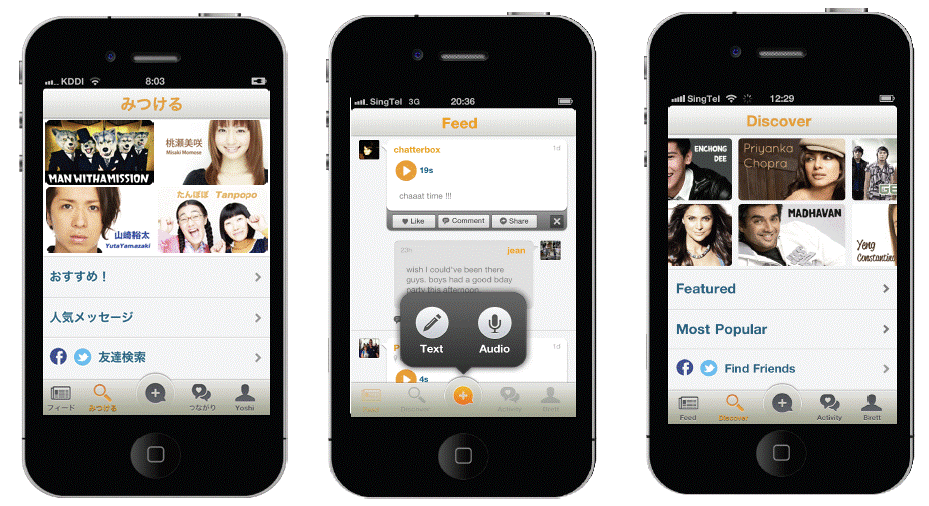The 6th SDP Asia Summit 27-30 March was reviewed previously here and here. Tom Clayton gave an excellent presentation on BubbleMotion’s transition from being VAS (Value Added Service) provider to being an App provider at the conference, his case study is the focus of this article.
Use of applications on smartphones is growing rapidly in Asia. China is now the 2nd largest App Market in the World, with an app session growth between Jan-Oct 2011 of 900%. Over the same period India’s growth was 400% and Thailand was 350%. While VAS are failing in many Asian countries. The Philippine’s telecom regulator first clamped down on direct SMS marketing, setting text templates around campaigns which made any direct marketing ineffective. India then came down even harder on VAS subscriber acquisition, effectively ending any customer acquisition through double-confirmation rules. Then Indonesia took it the further, wiping out the entire VAS ecosystem overnight with triple-confirmation required on all new sub acquisitions and weekly “opt-in” required on all renewal subscribers. Regulators are killing an operator’s ability to compete with Over The Top apps in developing markets.
Looking at the pros and cons of building VAS versus building apps:
- VAS pros: Free infrastructure opex, free marketing spend, and ubiquitous billing.
- VAS cons: Operators own all decisions, limited marketing control, minimal rev shares, delayed payments, high level of customization, and upfront capex.
- App pros: Complete autonomy & control, higher rev share, easier to scale globally, and unified service globally.
- App cons: Costly infrastructure opex, D2C (Direct to Consumer) marketing costs, D2C support costs, and limited billing options.
Some of the challenges in moving from a VAS to an App provider include:
- Understanding direct to consumer focus: being accustomed to selling to and working with operators, with very little experience on dealing directly with consumers.
- Coding skill-set: good at hardcore network programming, but lack of strong visual UI/UX (User Interface / Experience) expertise and app languages, and the need to iterate very fast – weekly (if not daily).
- Minimal knowledge of marketing to consumers: accustomed to operators controlling the promotions, now need to purchase mobile ads via networks and aggregators, and need to figure out how to grow virally via social media.
- Business Model challenge: VAS services are typically driven off subscription pricing models. Some are also usage based, but there are few models other than usage and subscription.
- Leading App pricing models are very different:
- Free – focused purely on user growth;
- Paid upfront – paid apps to download;
- Freemium – free to download, but looking to upgrade users in-app;
- Ad-based – funded completely off ads within the app;
- Virtual goods – selling goods within the app; and
- Subscription – although, limited ‘auto-renewing’ subscription capability compared to the VAS space.
- Smartphone Apps are are going to be a negative investment for a while. Need to hire the expertise lacking internally before the model and business is proven.
- May lose focus and critical revenue from the VAS business. Diverting resources and focus to App business will inherently lead to drop off on the VAS business.
Given the challenges of the transition, BubbleMotion created the Bubbly app. Bubbly is the first voice-based communication platform that brings together all mobile users across feature phones, iPhones and Android. iPhone users can download the free app and connect with the existing 16+ million users and hundreds of celebrities. Voice + Text makes Bubbly the first social voice network to broadcast and share anytime from anywhere. With the app, users can now share updates directly to Twitter and Facebook and easily to connect with other friends using the Bubbly app.
To manage the transition BubbleMotion set up a dedicated Apps team with experienced developers, product experts and UI/UX designers. Creating a slick experience is essential, see figure below.
- Focused only on iOS & Android initially: Even in Android – only focused on 4 form factors initially.
- Vetted different business models: Started with recurring subscription and moved to one-time payment.
- Set up faster Dev cycles: Implemented weekly “sprints” and bi-weekly release cycles.
- Launched in core markets first: India, Indonesia, Philippines and Japan.
- Started mobile advertising direct.
BubbleMotion built on their strengths:
- 16M+ Users: Wanted to bring the value of 16M users from the launch.
- Reach across 1.2B feature phones: Didn’t want it to be a smartphone only app.
- 1,000+ Celebs voice blogging: Lots of big name celebs are actively blogging – wanted them on the app Day 1.
- Billing connectivity to mobile operators: Billing in Android is in its nascent stages, so had to leverage their existing billing capabilities.
- Large volume of SMS capacities: reuse their assets within the operator, especially the SMS capabilities to feature phones.
The Results:
- Much higher user engagement: Majority of users following other users in addition to celebs. P2P blogging is 67% of traffic (compared to 29% on the VAS side). 74% of blog posts have audio (even though text and tweets are available). High number of comments per post. 3.2 sessions per user per day (4X the VAS service).
- App Store Ranking spiked to Top 20. Within 3 days of launch passed Google+ in their core markets
The transition from VAS provider to app player is not simple. BubbleMotion shows it can be done. But this should also be seen as a death-knell for emerging market operator’s future VAS revenues thanks to their local regulators essentially killing the local market.
